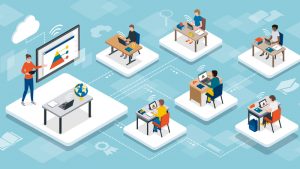Vice President Kamala Harris announced the availability of nearly $1 billion in U.S. Department of Commerce’s National Telecommunications and Information Administration (NTIA) grants to expand broadband access and adoption on Tribal lands.
Arizona State University (ASU) announced it is hosting a Digital Trust Summit this month to strengthen digital trust in education and education-to-workforce systems.
Mississippi’s Vicksburg Warren School District (VWSD) is encouraging K-6 students to think about potential future career paths.
The Department of Labor (DOL) – and numerous state governments that the agency assists – struggled during the coronavirus pandemic to ramp up unemployment insurance (UI) programs to meet sharp increases in demand. Some of the principal culprits, according to DOL’s inspector general (IG), were legacy systems, insufficient staffing resources to manage increased unemployment claims, and unclear and untimely Employment and Training Administration (ETA) guidance.
The COVID-19 pandemic allowed higher education staff members to accelerate the use of online learning and helped campus communities to see the value of technology applications in higher education, according to a new report.
The unprecedented events of 2020 caused increased public records requests for COVID-19 data and information about crisis planning and processes. The types of requests are becoming more complex for health departments, law enforcement, and public safety agencies. Additionally, the rush to remote work during the pandemic led to inaccessible, non-digitized records, increasing the time to release.
Now that there are real dollars beginning to finally accompany the many voices calling for government IT modernization, it’s perfect timing for Marianne Bellotti’s new book, “Kill It with Fire,” which cautions against the headlong approach the title connotes. She conveys this quite succinctly in the book’s pithy epigraph – with a quote from Ellen Ullman, a fellow author and computer programmer: “We build our computer systems the way we build our cities: over time, without a plan, on top of ruins.”
Purdue University announced that Ian Hyatt will be the school’s new CIO. Hyatt, who was selected following a national search, joins the university leadership team and will oversee IT for the university.
The University of Nevada – Las Vegas (UNLV) announced that remote learning will be incorporated into select traditional classes. The school is currently recruiting instructors for a pilot program this fall.
Sens. Maggie Hassan, D-N.H., and Marsha Blackburn, R-Tenn., and Reps. Chrissy Houlahan, D-Pa., and Jim Baird, R-Ind., have introduced the Statistical Modeling Education Act, which would help K-12 schools to modernize their math curriculum and improve K-12 science, technology, engineering, and mathematics (STEM) education.













